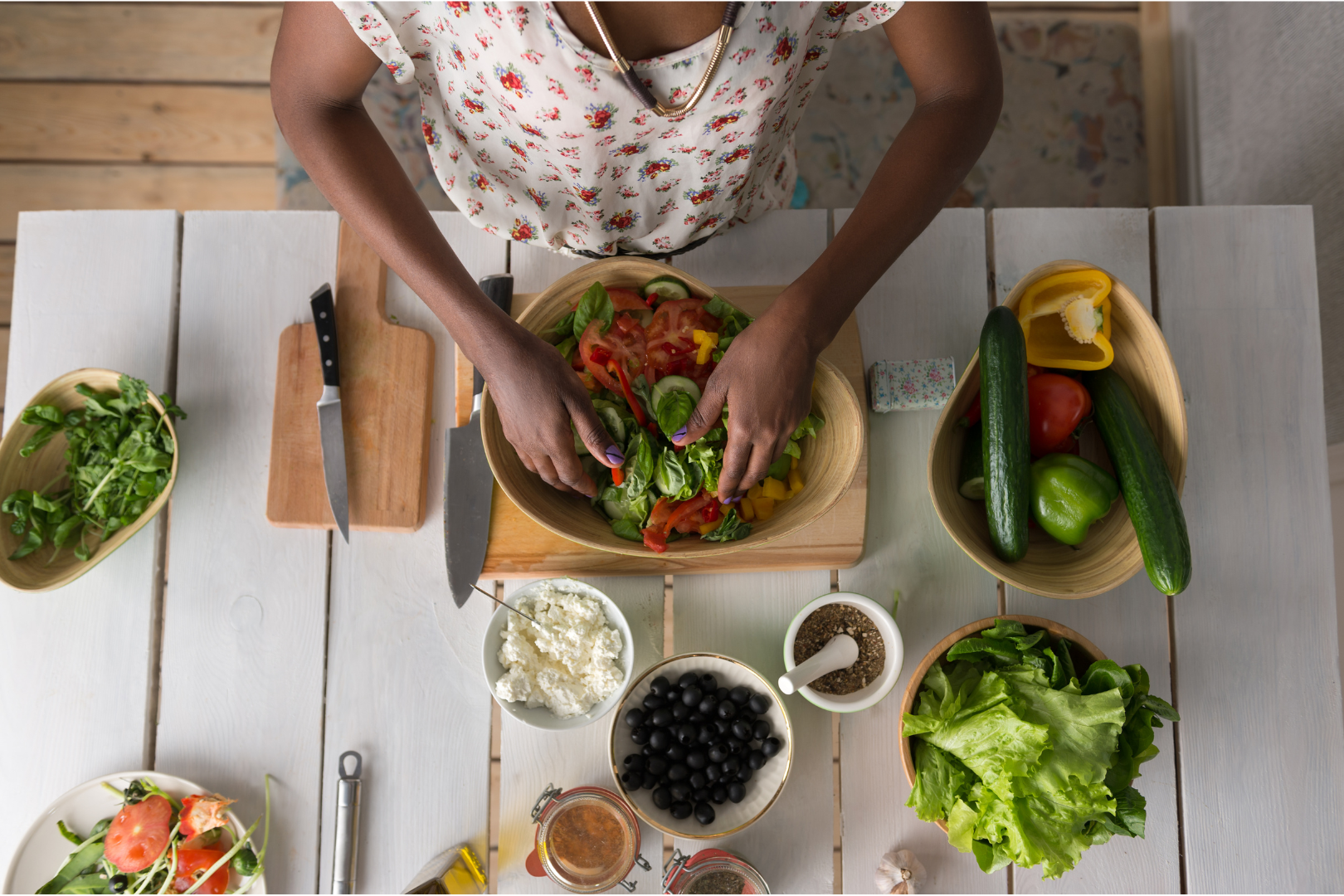
Author :
Eunice Adu- Tutu, Dietetic Practicum Student. Reviewed by Dahlia Abou El Hassan, MScFn, RD, Food Services Registered Dietitian.
Meal Prep
Meal planning can be extremely helpful to students living on a budget or on a tight schedule. Planning your meals in advance ensures consistent access to nutritious food throughout your weeks, which supports a sustainable healthy lifestyle. It is worth noting that meal planning depends on several factors, including how often you cook and grocery shop, dietary restrictions etc. However, the main idea behind menu planning is to create a meal system that works best for you without being complex or extravagant. To get started on your meal planning journey, check out the following tips:
1. The Canadian Food Guide (CFG)
To begin, use the CFG to help you visualize what your plate should like. The CFG ensures we incorporate balanced and nutrient-rich foods into our meals. The guidelines recommends that Canadians aim to fill half their plate with fruits and vegetables, a quarter for whole grain options, the remaining quarter is for a protein source.
2. Choose More Seasonal Ingredients
The next step in meal planning is to select your favourite seasonal meals and write down the list of ingredients for each recipe. If you are unsure which foods are in season or want to experiment with new seasonal ingredients, you can check out the FoodLand Ontario website. Another useful tool to to browse for recipes ideas with nutritional information is Cookspiration and Half Your Plate.
3. Create a Simple Menu
After you have written down your recipes, the next step is to create a weekly menu for your meals and snacks. Aim to have three balanced meals and two healthy snacks each day. To ensure you are getting a nutritious meal, include a mix of whole grains, fruits and vegetables, lean proteins, and healthy fats. A helpful tip to track whether you are having balanced meals is to organize your grocery list into categories such as produce, meats, whole grains, snacks, etc. You can also use a free Grocery Category template to simplify this process. Once you have your list, post your meal plan in a visible spot, and encourage others to add to it.
4. Whats Available on Hand
Checking what foods are available in your home is an essential part of meal planning. Before heading out to the grocery store, check your fridges, pantry, cupboards, and freezers to see what you have available. This helps you avoid buying duplicate items, which saves money in the process. Overall taking a quick look at food items you have on hand helps reduce food waste and promote sustainability with meal planning.
5. Busy Days
As a student, you may often find yourself engrossed in assignments and group projects. To stick to your meal plan, it's essential to consider ways to make cooking more manageable, especially on busy days. Opt for quick and easy meal options that require less time to prepare, such as stir-fry dishes or salads with pre-cut veggies. On days when you have more time, prepping ingredients in advance can be a time-saving hack for cooking meals in the future. An additional tip to consider is making extra portions to store in the freezer to consume over the week. Freezing extra meals ensures you always have a healthy meal option available at any time.
6. Save Your Meal Plans
Lastly, compile all your past menus into an electronic file or binder for later use. Having a collection of previous meal plans, are good to revisit to spark meal ideas. It can also provide you with quick reminders of simple, yet tasty meals you have created in the past.
Resources:
For additional tips visit UnlockFood.
NOTE: the content in this blog is solely for informational purposes and not a substitute for informed medical advice. If you are a student on a York U dining plan consult with the on-campus Registered Dietitian for all nutrition-related inquiries.
